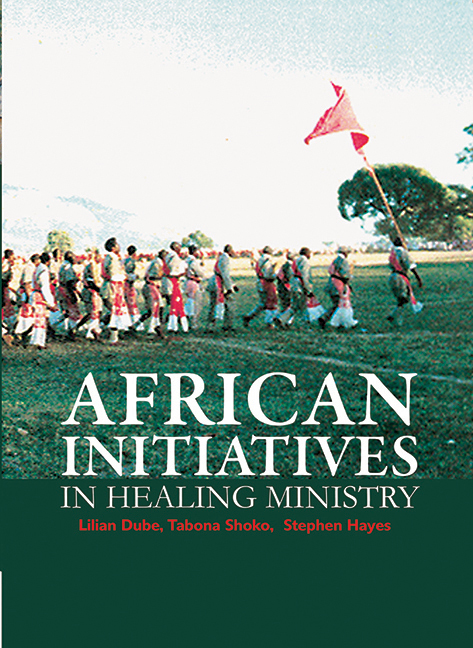Healing in Chita cheZvipo zveMoto (CZM)
Published online by Cambridge University Press: 28 February 2020
Summary
Spiritual healing in the Anglican Church is conducted by a priest called Rev. Lazarus Muyambi, founder of the Chita cheZvipo zveMoto (CZM – Community of the Gift of Holy Fire) at the Zimbabwe Spiritual Healing and Manger Centre at St Agnes Anglican Mission in Gokwe District. The relationship between Christianity and the African traditional world view, in the African initiatives in healing mission, is understood in terms of the historical background of the centre, its structure, the biographies of the healers, the healing ministry, and pastoral and social service.
St Agnes Mission commenced in 1953 as St Agnes Anglican School. A local congregation was eventually established at this place. But since it had no proper church building, services conducted by the resident assistant priest, Rev. Amos Masabalala, were held in one of the classrooms. In 1971 the school was taken over by the local council and in the same year the priest died. This severely affected the development of the infant church (Jongwe s.a.:1).
In 1972 Bishop Mark Wood of the Diocese of Matabeleland was allocated a fresh site in order to construct a church. He then called Rev. Lazarus Muyambi from Botswana to come and challenge the people of Gokwe, who were perceived as living in darkness. Muyambi responded positively but in Gokwe he was faced with many problems, such as lack of accommodation, a dry environment and few believers. He persevered, however, and constructed the church, which boosted morale in the new congregation.
On 4 April 1973, Bishop Mark Wood, who supported Muyambi financially and materially, officially opened the church in a colourful ceremony, and Muyambi was installed as the first priest-in-charge of St Agnes Mission.
Within a few years Muyambi had dramatically transformed St Agnes into a popular spiritual healing centre which was registered with the Government of Zimbabwe on 31 May 1979 as a welfare organisation called Zimbabwe Spiritual Healing and Manger Centre W.O. 17/79 (Jongwe s.a.:1).
The centre consists of a parsonage and church where all the services are held. Lazarus Muyambi is the father and head of the mission. Attached to the church is the vestry, which serves as the priest's office where all confessions, laying on of hands and regular prayers take place.
- Type
- Chapter
- Information
- African Initiatives in Healing Ministry , pp. 137 - 148Publisher: University of South AfricaPrint publication year: 2011



